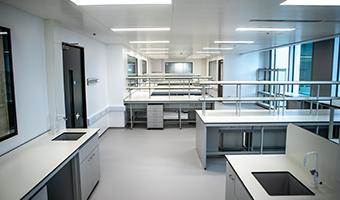The following article is featured in our Thames Valley Office Market report 2013, which can be downloaded above, or by clicking here.
New generation
The world is going through an unprecedented period of change, reflected by new technologies, the internet and globalisation - all of which alter how and where we live and work. Those reading this article should be conversant with Moore’s Law to gain a theoretical understanding of the growth in technology.
By taking an intellectual interest in office market trends, we can see beyond the surface level changes and instead begin to understand the tectonic forces that are altering the commercial landscape for office occupiers and investors alike.
Richard Florida, an American urban studies intellectual with a focus on social and economic theory, has extolled the idea of a new economic force: the Creative Class. His high profile theory is that the talented are beginning to favour cities over suburbs, a trend that is being reflected by the movement of some of the high tech industries in the U.S and elsewhere. Over the last year, it is also a trend that we have witnessed closer to home as many of the global hi tech giants have chosen London over the Thames Valley.
In his article within this report, Mark Cote, Managing Director of T3 Advisors, highlights how locations with ‘urban grittiness’ might appeal to the young workforces in tech community markets. This is perhaps another reflection of the broader ‘Creative Class’ concept, with Thames Valley centres such as Reading and Slough gearing up to develop their urban image.
Urban appeal of the Thames Valley
Having analysed our own Science and Technology database, there are 964 companies with 40+ employees based in the Thames Valley. Perhaps a more resonating statistic is that 72% of the world’s top 25 software companies have offices in the region.
If you were wondering how this ‘cities over suburbs’ theorem relates to Thames Valley offices, the picture is now clearer; this region is clearly profiled to follow the same trend as is being seen in the U.S.
Trend reversal: corporate heading east
It is worth considering that the likes of Google, Amazon and LinkedIn have all recently acquired major office hubs in London, apparently spurning the traditional tech corridor of the Thames Valley. Intuit, in the top 30 of the global software 100, has also just moved from Maidenhead to Victoria. While previously this sector tended to move west to the Thames Valley, there is now plenty of evidence to indicate a reversal of this trend.
Tech City and the Silicon Roundabout in London are illustrations of this phenomenon. Are they a manifestation of the urbanisation of the young talent, and possibly the broader ‘creative class’? In this context, does the Thames Valley represent the new suburbia?
If the surface level changes are manifested in a business’ locational decisions, what are the underlying drivers that might be fuelling the ‘creative class’ force in this region?
• Company car tax is reducing the number of cars taken. Staff then want to be near transport hubs, often in urban locations.
• There is a renaissance of high-density residential living in city centres
• Property affordability (the ‘Friends Effect’ whereby singles share rentals); this is major factor in young talent shifting to live in East London rather than expensive central, south, west or north areas!
• Families want space and gardens, while singles want access to a good social life.
The Thames Valley is fighting back
How should the Thames Valley adapt in the face of these underlying tectonic changes? The infrastructure investment being made to the Thames Valley is a major step in the fight to reposition the region and retain hi tech dominance.
Crossrail could ultimately create both a threat and an opportunity as it better connects the Thames Valley to the east-drifting London creative talent.
The new Western Rail Access to Heathrow link, connecting Reading, Maidenhead and Slough to Heathrow’s T5, may reflect the reality that no government can undermine a region that produces £30 billion of its GDP. Therefore, should the London airport expansion be at Heathrow, not in the environmentally sensitive estuaries east of the capital?
Finally, the towns of the Thames Valley, particularly Reading and Slough, have the capability to deliver the urban environments that will enable the region to retain, attract, and accommodate the young and creative talent, rather than seeing it migrate to London.
Some of this change may come about through converting obsolete offices into residential space as a part of this urban renewal, a topic also explored in this report.
Understanding the ‘Creative Class’
The simple, superseding requirement for property investors and office occupiers in the Thames Valley is to be flexible and to get under the skin of what is driving the young, creative talent.
New generation changes go beyond social media and technological advances, to also understanding their knock-on effects and embracing the new ideas that come out of them.
Today’s middle-aged generation must be able to navigate this changing world of new technologies and social internet – using such tools as Twitter, Facebook or LinkedIn are good initial steps; ignoring them could indicate a broader disinterest in embracing change. By doing so, we can begin to talk the language of this ‘creative class’ and understand the changes to its work/life motivations.
To download a copy of the Thames Valley Office Market report 2013, click here.
REGISTER FOR UPDATES
Get the latest insight, event invites and commercial properties by email






